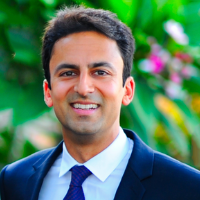Working During and After Graduation as an International Student
International students should begin thinking about their post-graduation work options in advance to set themselves up for success when navigating the complex U.S. immigration system.
International students on an F-1 visa can legally work in the U.S. for up to one year after graduation through the Optional Practical Training (OPT) program, while certain STEM majors can extend OPT for up to two more years. OPT allows undergraduate and graduate international students to start working right after graduation or while they are still finishing their degrees. In some cases, OPT can also be used by a student entrepreneur to start their company before or after graduation.
Once OPT or STEM OPT expires, international students only have 60 days to leave the U.S. or find alternative work authorization. Therefore, the sooner you start exploring work visa options, the better. If you wait until college graduation to begin the process, you will likely have to leave the U.S. at the end of the 60-day grace period. Use this guide to learn more about U.S. work visa options for international students.
U.S. Work Visa Options for International Students After Graduation
If you don’t qualify for OPT or want to stay in the U.S. after your OPT expires, you will need a U.S. work visa. The four most common temporary work visas are the H-1B, E-2, TN, and O-1A. For international students seeking permanent residency, the two best employment-based green card options are EB-2 NIW and EB-1A. Each visa and green card has different qualifications, application requirements, and processing times.
H-1B Visa
The H-1B visa is the most popular temporary work visa. The U.S. uses a lottery system for H-1B visa selection. Here’s what you should know about the H-1B lottery:
- 65,000 visas are given to those with a bachelor’s degree.
- An additional 20,000 visas are given to those with a master’s degree or higher.
- Your employer must apply for the lottery in March.
- You can begin working on an H-1B in October of the same year.
If your student visa or OPT grace period is set to expire before October, the employer can also apply for an H-1B Cap Gap Extension so that you can remain in the U.S. until the H-1B becomes effective. The H-1B visa lasts six years with the possibility to extend and apply for permanent residency.
E-2 Visa
The E-2 visa may be a good option for student entrepreneurs. To qualify, you must be from a treaty country and invest a significant amount of seed money into your company. The amount that counts as significant depends on the value of the company. You must also own at least 50% of the company.
There is no degree requirement for an E-2 visa which means that a qualifying student entrepreneur could apply before they graduate. This visa can be extended indefinitely as long as the business is operational and viable.
TN Visa
A TN visa can work well for international students from Canada or Mexico. Only specific occupations qualify for this visa, some of which include:
- Nursing and other medical professions
- Teaching higher education
- Engineering
- Accounting
While you must have at least a bachelor’s degree to apply, there is no limit on the number of visas offered each year. A TN visa lasts three years with the option to renew indefinitely. However, unlike the H-1B and E-2, a TN visa is not for dual intent. That means it’s more complex and challenging to apply for permanent residency while on a TN visa.
O-1A Visa
The O-1A is a temporary work visa for individuals with extraordinary abilities. It’s one of the best options for student entrepreneurs because there is no specific degree or income requirements. Other international students may qualify for this visa if they have demonstrated extraordinary abilities in one of the following areas:
- Science
- Arts
- Education
- Business
- Athletics
To prove extraordinary ability for an O-1A visa, you must meet three out of eight criteria. You can begin working to meet some of these criteria while still in college. The visa is valid for three years and can be extended indefinitely. You can also apply for permanent residency while on an O-1A visa.
EB-2 NIW
The EB-2 National Interest Waiver (NIW) is a permanent immigrant petition. You will need to have either an advanced degree or exceptional ability to qualify. If you are applying as a student entrepreneur, you must prove that your company has strong potential to be successful and make a positive impact in the U.S. in the future. Examples include:
- Economic impact: creating more jobs
- Social impact: providing a public service
Once your EB-2 NIW is approved, you will have to wait until your green card is processed before you can use it to legally work in the U.S. This can take up to a year, so consider applying at least 12 months before graduation or before your OPT expires. EB-2 NIW processing times are especially high for students from China and India.
EB-1A
EB-1A is one of the most difficult U.S. green card pathways because you must prove that you are in the top 1% of your field. You will be judged based on three out of ten criteria. If you are thinking about an EB-1A green card, start preparing while you are still in school. The time it takes to get a green card through the EB-1A tends to be shorter than the process with the EB-2 NIW. However, you should still plan to apply for the EB-1A at least a year before your OPT expires.
International students from China and India may be particularly interested in an EB-1A because it offers shorter wait times for individuals from these countries than other permanent residency options.
Timeline and Tips for Setting Yourself up for Success
The benefit of researching and preparing for work visas before you graduate is that you can leverage your time in college to meet the qualifications for competitive visas like the O-1 and EB-1A. Here are some tips for setting yourself up for success as an international student:
- Try to get featured in the press during school
- Compete in relevant industry competitions
- Join a reputable professional organization relevant to your field of study
Some visa options may be a better fit for undergraduate students while others may be suited for graduate students. Legalpad can help you decide whether to apply for a temporary visa such as an O-1 versus a permanent residency petition such as the EB-2 NIW. For example, if you plan to graduate or finish OPT within the next year, consider applying for an O-1 since it usually has faster processing times than a green card.
Finding the Right Immigration Path After Graduation
Choosing the best immigration path starts with your specific immigration goals. Do you want to stay in the U.S. temporarily after graduation to work for a few years and then go back home or relocate to a different country? Or, is your ultimate goal to establish permanent residency in the U.S.? Furthermore, if you are an entrepreneur, your immigration path may look different than that of a full-time employee.
Legalpad can help move you closer to your work visa and permanent residency goals quickly and efficiently. Their immigration experts simplify the annoying complexities of the U.S. immigration system to make remaining here after graduation as stress free as possible. Legalpad offers a free one-on-one consultation to get you started on the exploration of your post-graduation options.
























